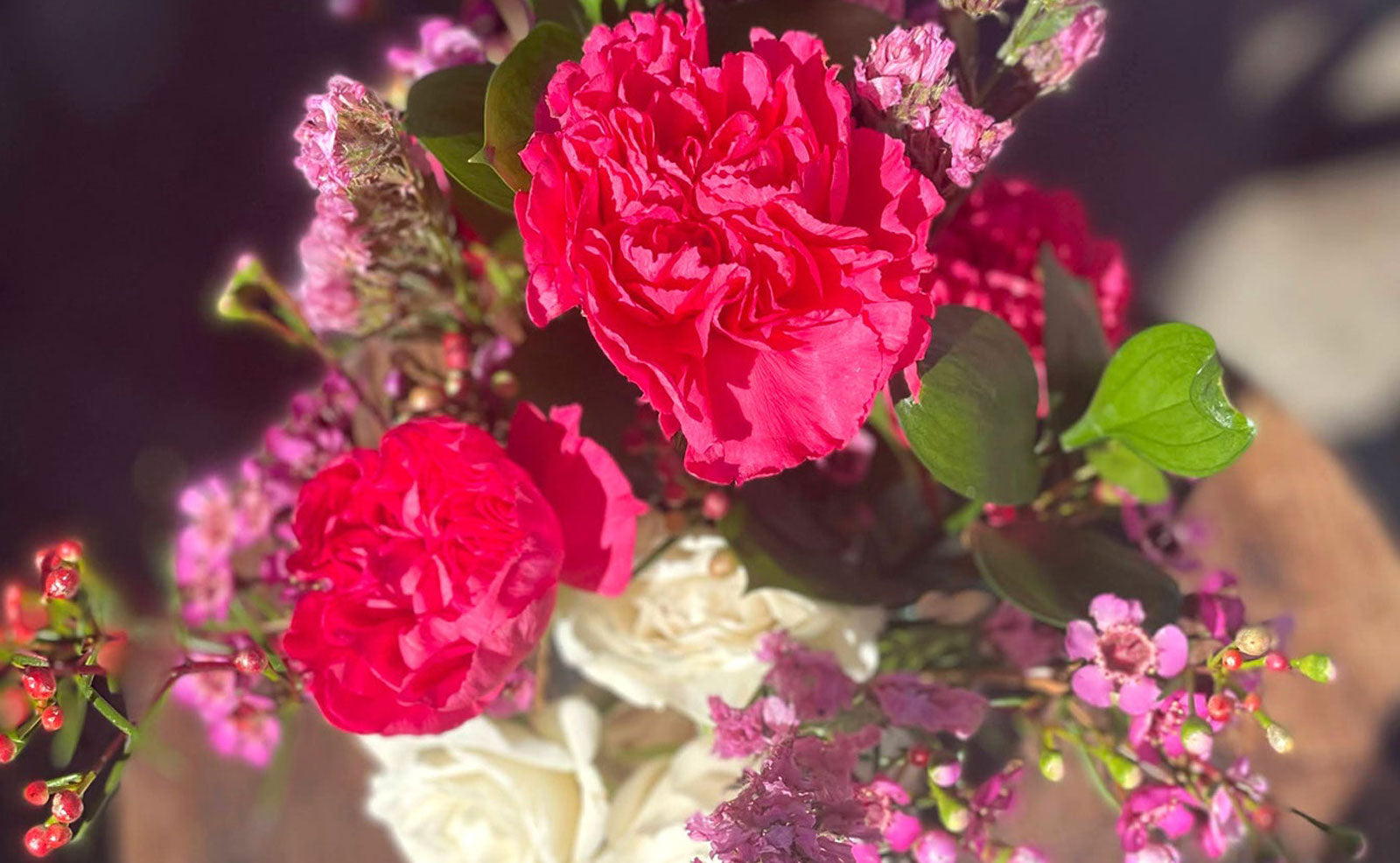
We believe every bloom has a purpose, even after its beauty fades. Through our Soil to Soil Initiative, we encourage clients and customers to embrace composting as a way to give flowers a meaningful second life. By transforming spent blooms into nutrient-rich compost, we close the loop between nature and humanity, fostering a greener, more sustainable tomorrow.
The Challenge
Many people are unaware of the environmental impact of discarding flowers in the trash. Decomposing organic materials in landfills generates methane, a potent greenhouse gas. This prompted us to educate and empower our community to adopt composting as an eco-friendly solution that benefits the planet.
The Solution
Through engaging workshops, blog content, and community outreach, we introduced the Soil to Soil Initiative as a simple, actionable way to practice sustainability. The initiative emphasizes composting as an eco-conscious way to dispose of spent blooms, returning their nutrients to the earth to nourish future growth.
Key benefits of composting flowers include:
- Nutrient-Rich Soil: Compost enriches the soil with vital nutrients, enhancing plant health and growth.
- Waste Reduction: Diverts organic waste from landfills, reducing methane emissions.
- Sustainable Gardening: Supports a self-sustaining cycle as blooms that once adorned homes now help feed gardens.
The Impact
Through the Soil to Soil Initiative, we have inspired countless people to see the end of a flower’s life as a new beginning for the earth. Others reported that integrating flower composting into their gardening routines results in healthier plants and a deeper connection to sustainability.
Our Vision
We envision a world where every bloom serves a dual purpose: spreading beauty in its prime and nourishing the earth in its afterlife. Through the Soil to Soil Initiative, we aim to raise awareness of composting's ecological benefits and inspire a broader cultural shift toward sustainable practices.
How to Start
Composting your flowers at home is a simple and rewarding way to reduce waste and nurture the soil. Here's a step-by-step guide to help you get started:
- Gather Your Materials
- After your flowers have reached the end of their life, remove any non-compostable materials such as plastic wraps, ribbons, or wire stems.
- Separate organic matter like petals, leaves, and stems.
- Prepare the Flowers
- Chop or shred the flowers into smaller pieces. This speeds up the decomposition process by increasing surface area.
- Create a Balanced Compost Pile
- Mix the flowers (green, nitrogen-rich material) with brown materials like dried leaves, newspaper, or cardboard to maintain a healthy balance in your compost pile. Aim for a ratio of 2-3 parts brown to 1 part green.
- Add kitchen scraps like fruit and vegetable peels, eggshells, and coffee grounds for added nutrients.
- Choose Your Composting Method
- Outdoor Composting: Use a designated compost bin or pile in your garden. Ensure good aeration by turning the pile every few weeks.
- Indoor Composting: If outdoor space is limited, use a countertop compost bin or invest in a small worm composting setup (vermicomposting).
- Monitor and Maintain
- Keep the compost moist but not waterlogged—think of the consistency of a wrung-out sponge.
- Turn or aerate the pile regularly to promote even decomposition and prevent odors.
- Harvest Your Compost
- In a few months, you’ll notice the materials breaking down into a dark, crumbly substance with an earthy smell—this is your compost!
- Use it to enrich garden beds, potted plants, or even sprinkle it on your lawn for a natural nutrient boost.
By following these steps, you’ll help your flowers complete their journey from soil to bloom and back to soil. Join us in creating a greener planet—one bloom at a time.

